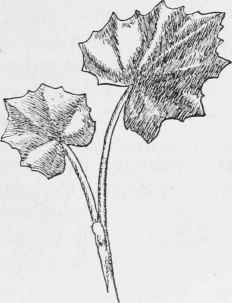Coltsfoot. Tussilago Farfara
Description
This section is from the book "Our Early Wild Flowers", by Harriet Louise Keeler. See also: Newcomb's Wildflower Guide.
Coltsfoot. Tussilago Farfara
Named from tussis, cough, for which the plant is a reputed remedy.
Perennial. Naturalized from Europe. Wet places and along brooks, in New England, New York, and Pennsylvania; rare in the Middle West. Rare in northern Ohio. April, May.
Rootstock
Horizontal, creeping, sending up simple scaly scapes in early spring, each bearing a single flower-head.
Leaves
Rounded, heart-shaped, angled, or toothed, woolly when young.
Flower-Heads
Radiate-composite, containing both ray and disk florets; ray-florets in several rows, narrow, pistillate, fertile; disk-florets sterile; involucre nearly simple; receptacle flat; akenes cylindrical; pappus abundant, soft, and hair-like.
Coltsfoot is a plant that came to us from Europe and has not wandered very far from the Atlantic seaboard. New York and Pennsylvania are given as its western limit. There is nothing attractive about the plant; the flower-head is borne on erect, leafless stems and has been described as a small Dandelion with its heart plucked out. However, this is the same Coltsfoot that once was gathered and preserved in company with Boneset, Catnip, and Hoarhound as part of the domestic materia medica, and had at one time a great reputation as a remedy for coughs and colds. Its Latin name is an old one used by Pliny, and this points to a similar use of the plant in ancient times.
The flower-head is paler yellow than that of the Dandelion and is set in a deep, leafy, thimble-shaped green cup. The ray-florets are fringe-like. The head usually closes at noon. The flowers precede the leaves by some days.

Coltsfoot. Tussilago farfara
Continue to:


